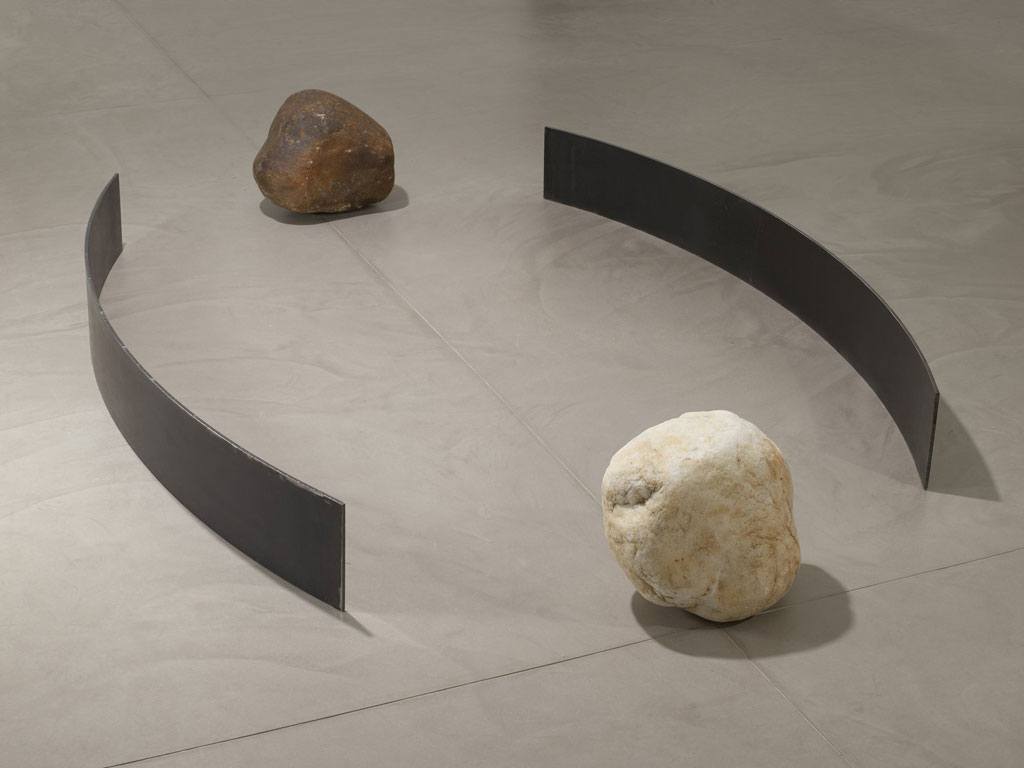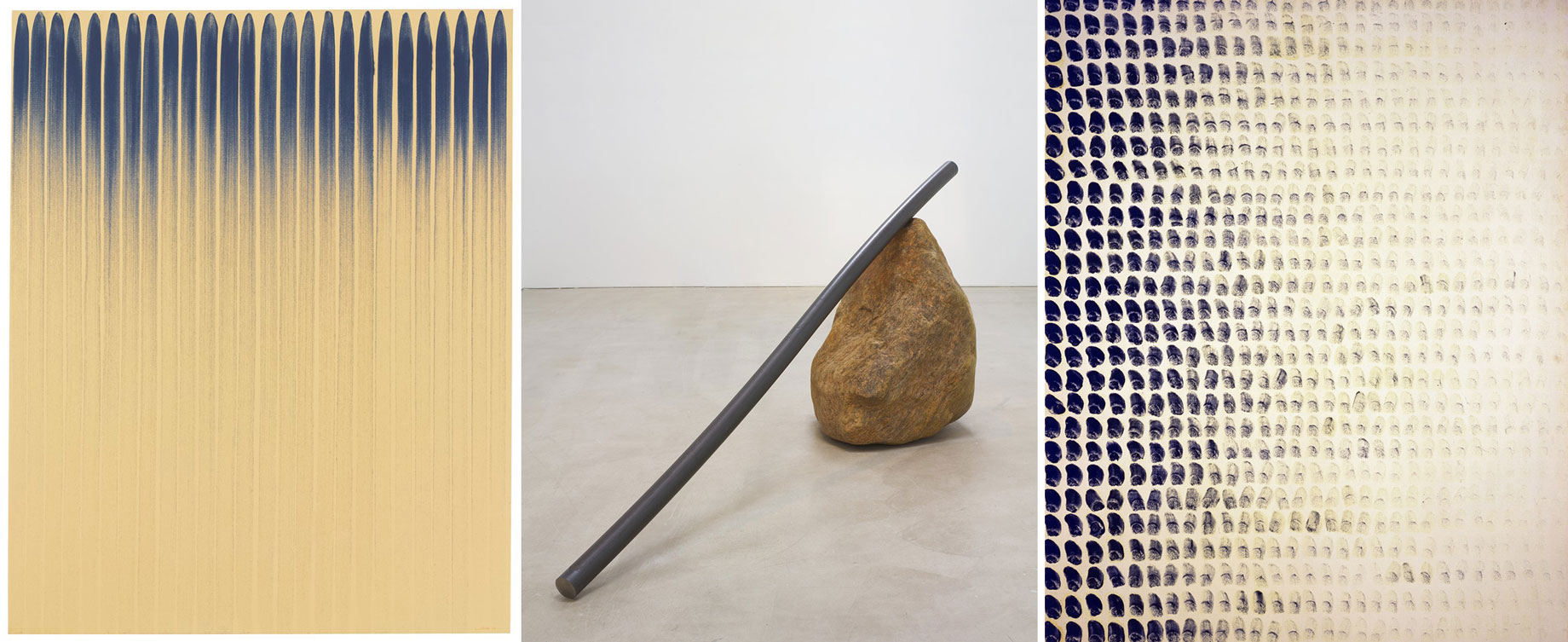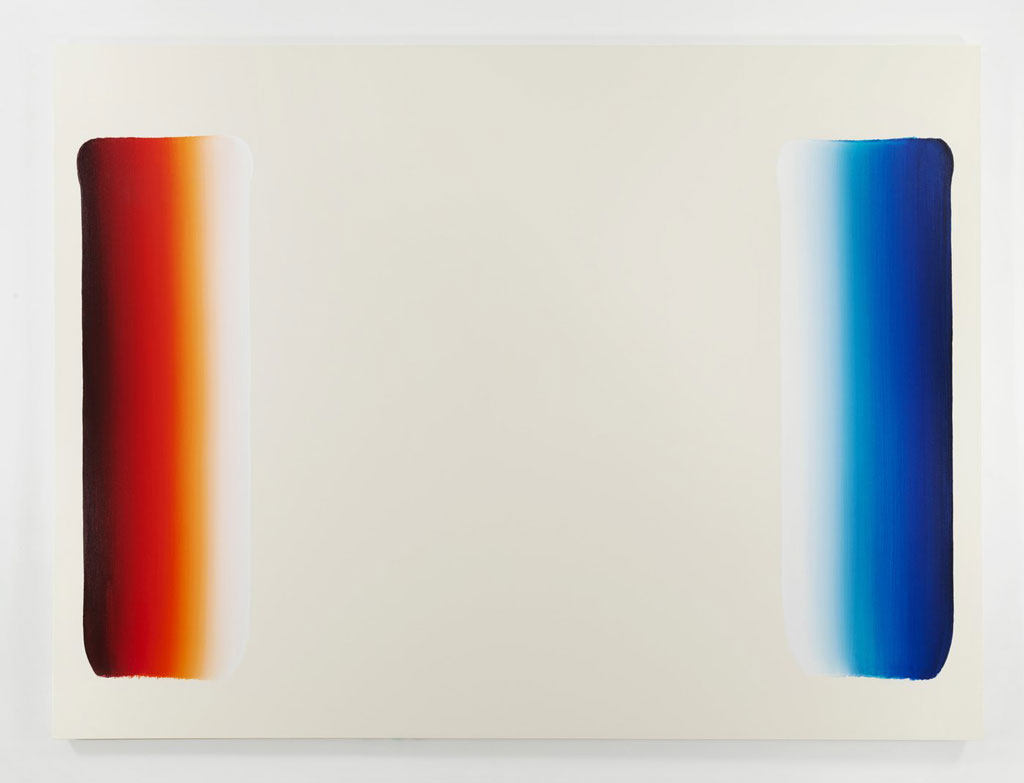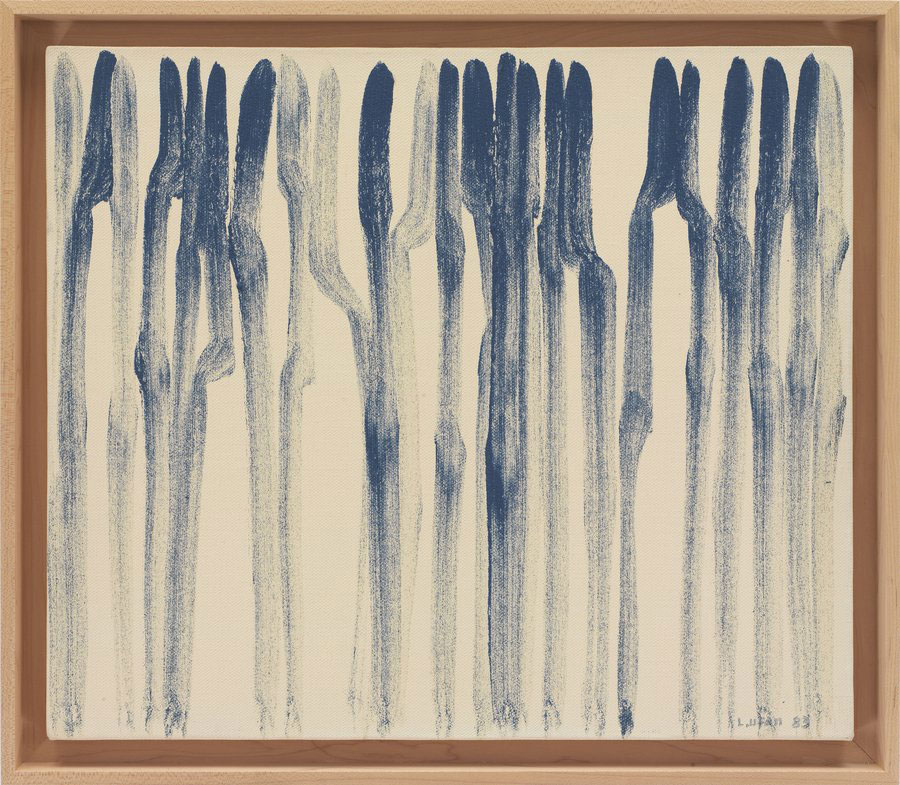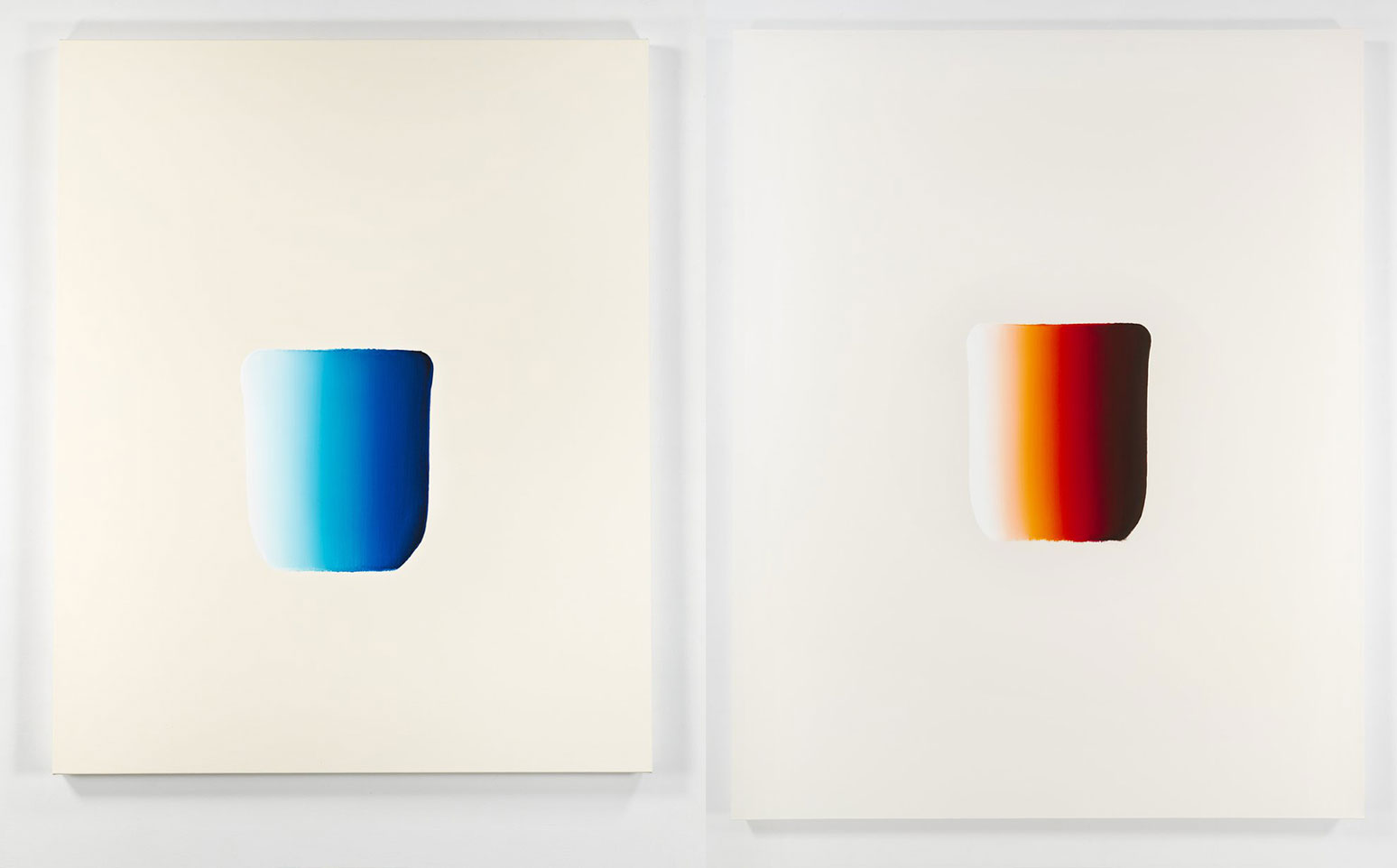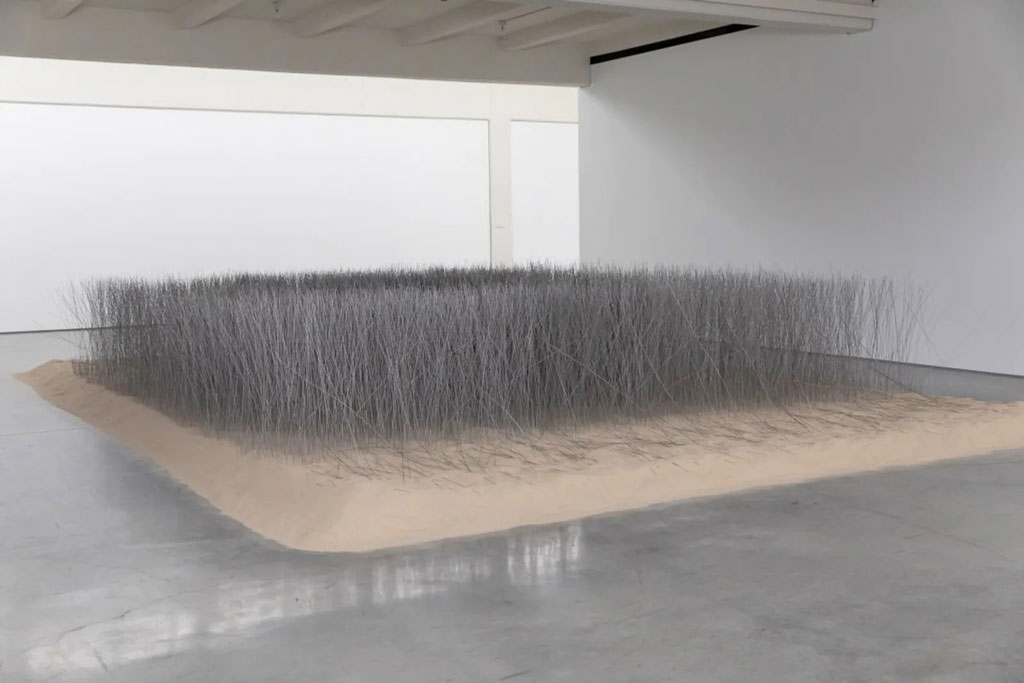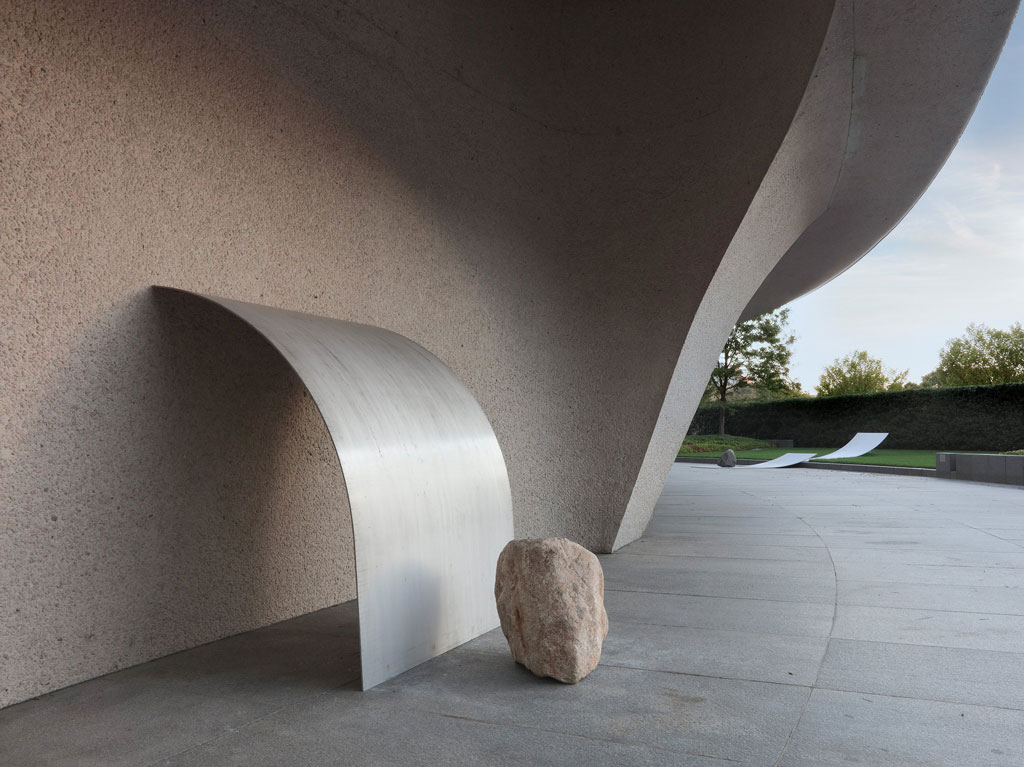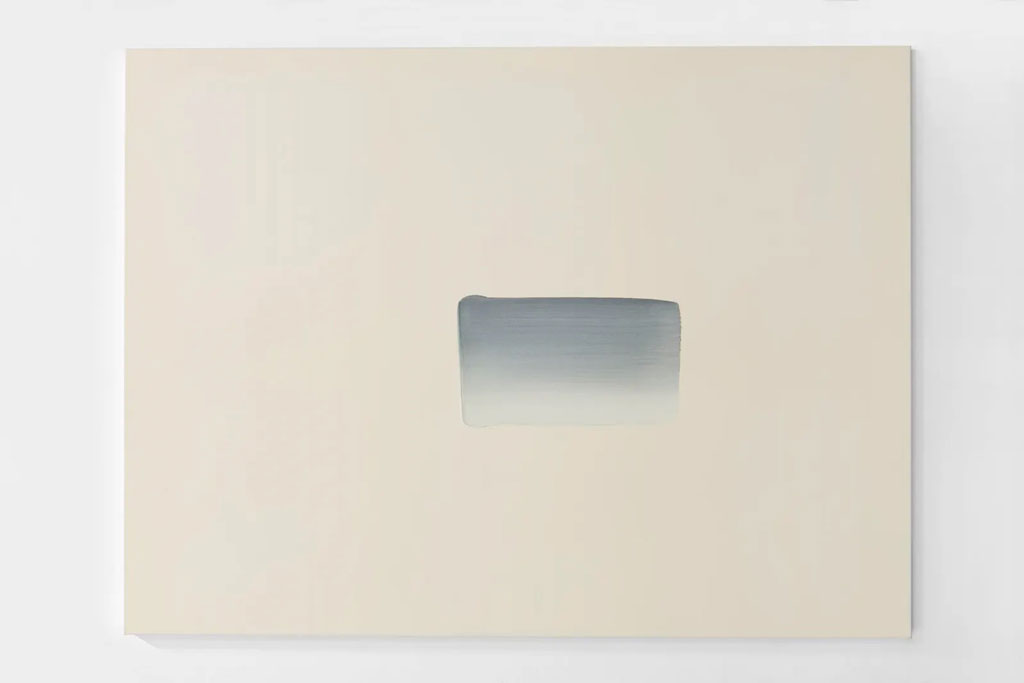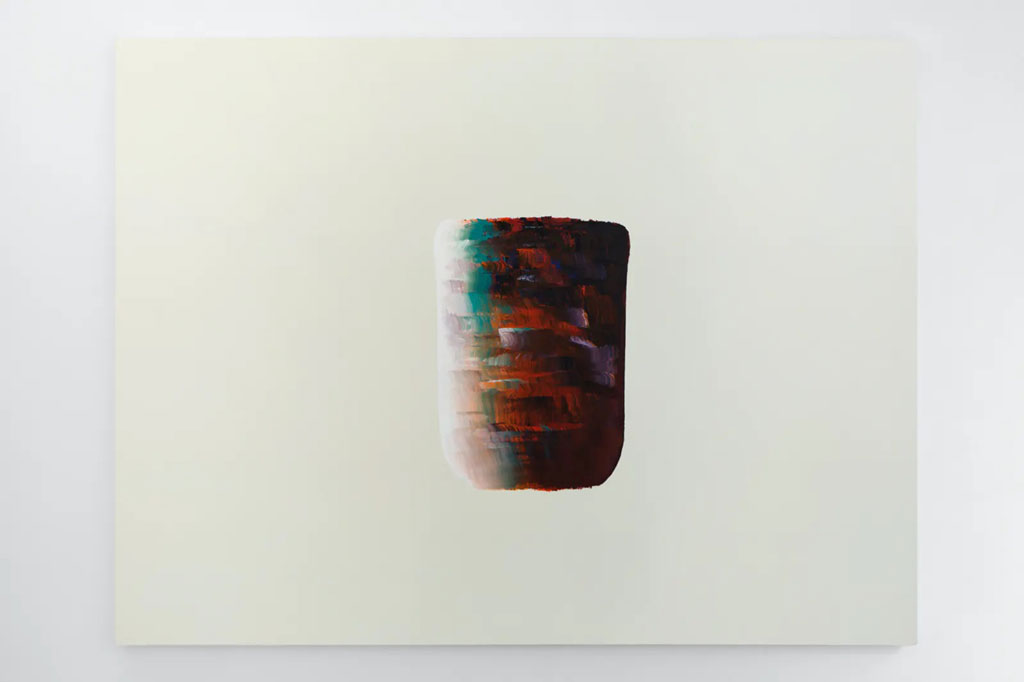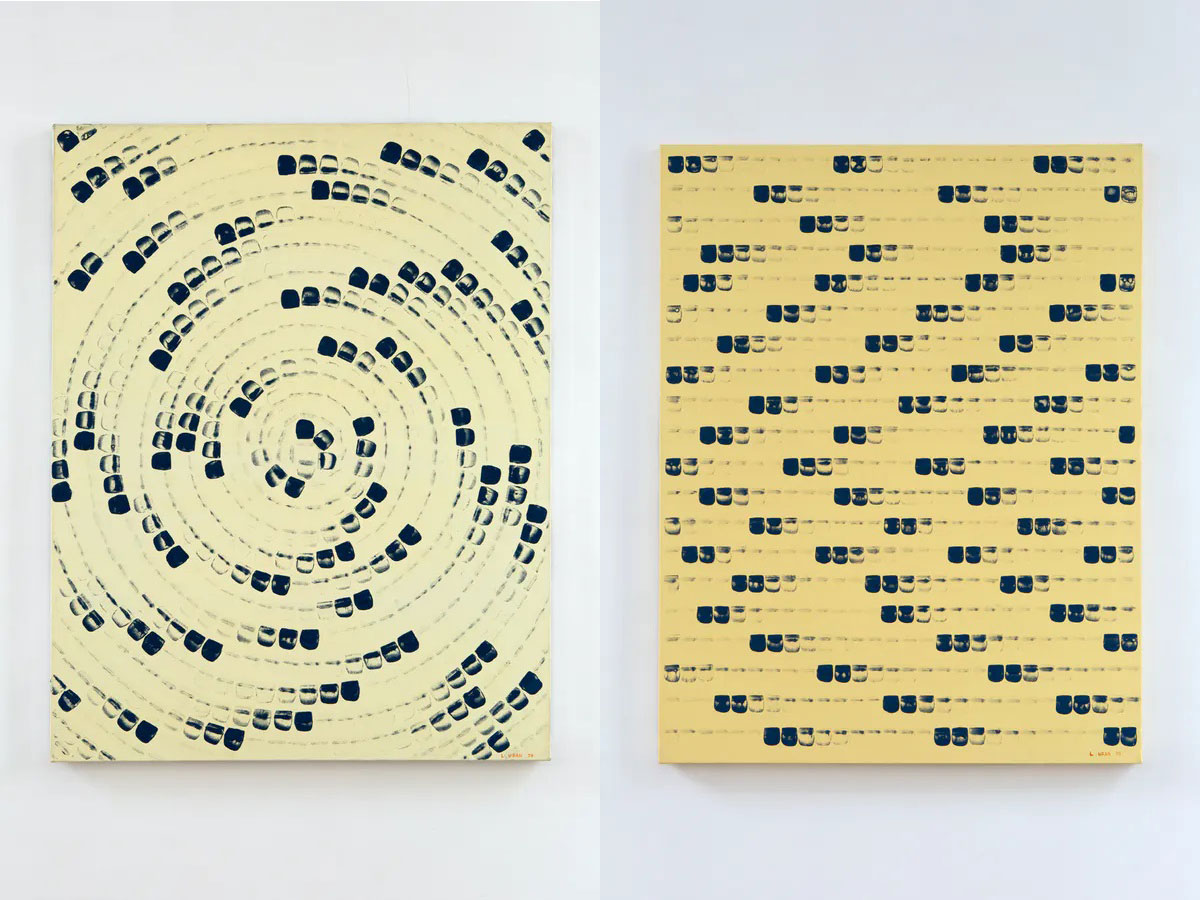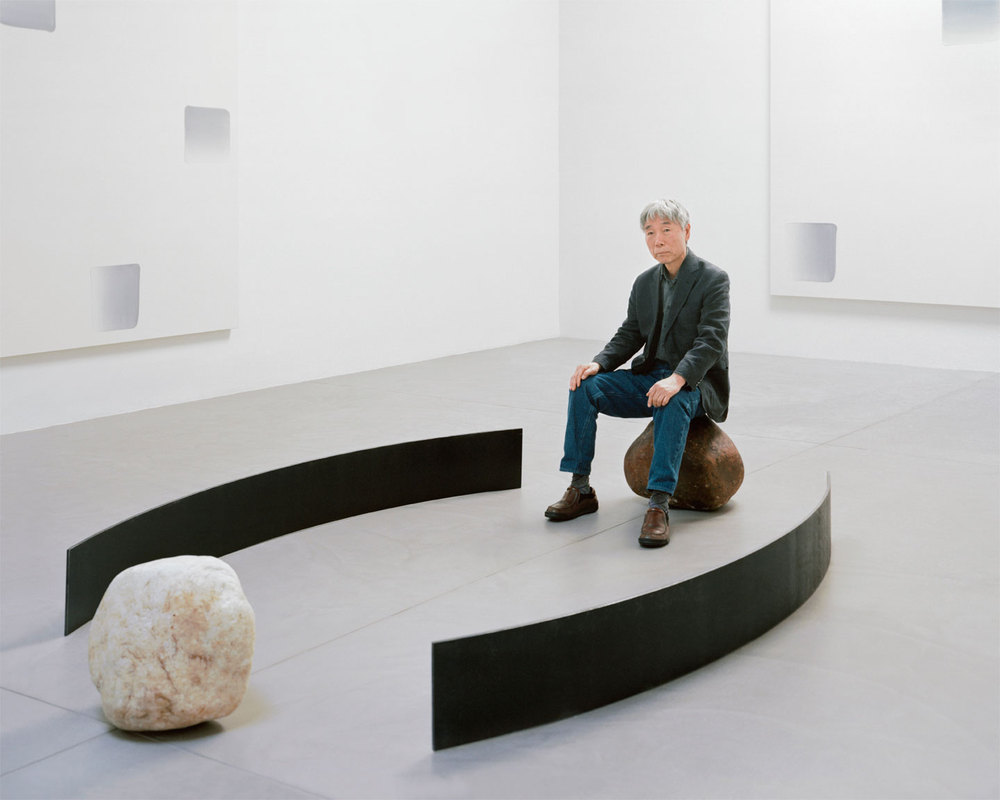TRACES: Lee Ufan
 Today is the occasion to bear in mind the painter, sculptor, writer and philosopher Lee Ufan (24/6/1936- ), who came to prominence in the late 1960s as one of the major theoretical and practical proponents of the avant-garde Mono-ha (Object School) group. The Mono-ha school of thought was Japan’s first contemporary art movement to gain international recognition. It rejected Western notions of representation, focusing on the relationships of materials and perceptions rather than on expression or intervention. Through documents or interviews, starting with: moments and memories, we reveal out from the past-unknown sides of big personalities, who left their indelible traces in time and history…
Today is the occasion to bear in mind the painter, sculptor, writer and philosopher Lee Ufan (24/6/1936- ), who came to prominence in the late 1960s as one of the major theoretical and practical proponents of the avant-garde Mono-ha (Object School) group. The Mono-ha school of thought was Japan’s first contemporary art movement to gain international recognition. It rejected Western notions of representation, focusing on the relationships of materials and perceptions rather than on expression or intervention. Through documents or interviews, starting with: moments and memories, we reveal out from the past-unknown sides of big personalities, who left their indelible traces in time and history…
By Efi Michalarou
 Lee Ufan was born in Kyongnam, a poor mountain region in South Korea. At the age of 5 or 6 years old Lee Ufan went to study calligraphy, poetry and painting. He dedicated many hours to his studies including music comprehension in order to develop his artistic abilities. In 1953 he finished studying at the College of Kyongnam and entered the University of Seoul. In 1956, at the end of his time at the university, he received recognition for being a talented artist especially with his works in oil painting. His stopped his studies soon after and moved from Korea to Japan where his uncle was living. There he picked up his studies at the university Takushoka in Tokyo. In 1958 entrance to the university allowed him to become a resident of Japan. He continued studying especially partaking in classes regarding philosophy at the Philosophy Department of the University of Nihon in Tokyo. At the same time he applied his methods of calligraphy at the exhibition “From Point”. In 1961 he finished his studies in Philosophy and returned for a time to Korea. 1967 marked a major turning point when Lee Ufan opened his first major exhibition at the Sato Gallery in Tokyo. This began a long partnership between him and the Sato Gallery. He also participated in the hudge exhibition “Contemporary Art of Korea” at the National Museum of Modern Art in Tokyo. In 1968, Lee was introduced to artists Nobuo Sekine, Takamatsu Jirō, and Kishio Suga, who, with Lee, formed the Mono-ha (School of Things) group, with Lee as Mono-ha’s leading theorist and practitioner. The group rejected Western notions of representation and emphasized material, perception, and the interrelationships between space and matter, creating works from raw, natural, and industrial materials with little manipulation. That same year, Lee presented “Phenomenon and Perception B” at the National Museum of Modern Art, Tokyo, his first site-specific sculptural floor-based work comprised of a heavy stone dropped on a glass plate. He would later retroactively title his three-dimensional works “Relatum” (1968– ) to suggest an individual element within a relation defined by both space and object. From 1971 to 1974 Lee Ufan taught a course at the School of Photography in Tokyo. In January he presented an installation at the Pinar Gallery of Tokyo. In May 1971 he participated in 10th annual Japanese contemporary art show at the Metropolitan Art Museum in Tokyo and in September at the 7th Biennial in Paris where he was invited to represent Korea. For this occasion he represented the group for the first time in Europe. In November he presented a show at the Shirota Gallery of Tokyo. In 1971 he also taught a class about the Monoha movement along with an exhibit about the subject. In August 1972 he inaugurated his first show in Korea at the Myong-Dong Gallery in Seoul. In 1973 the director of Tokyo’s famous Yamamoto Takahashi Gallery, who Lee Ufan had previously met in 1960, organized an exhibit in his honor. Thus began a long collaboration between Lee Ufan and the Gallery. After travelling around the Occident he created his serious, “From Point” and “From Line,” which were shown at the Tokyo Gallery. In July 1975 he commenced his second solo show at the Tamura Gallery. In the same year Lee Ufan was invited to participated in a large exposition entitled “Japan, Tradition and Gegenwart” in Dusseldorf and in “Japan Art Exhibition” at the Lousiana Museum of Modern Art. In November the Eric Fabre Gallery organized a solo Lee Ufan show in Paris.
Lee Ufan was born in Kyongnam, a poor mountain region in South Korea. At the age of 5 or 6 years old Lee Ufan went to study calligraphy, poetry and painting. He dedicated many hours to his studies including music comprehension in order to develop his artistic abilities. In 1953 he finished studying at the College of Kyongnam and entered the University of Seoul. In 1956, at the end of his time at the university, he received recognition for being a talented artist especially with his works in oil painting. His stopped his studies soon after and moved from Korea to Japan where his uncle was living. There he picked up his studies at the university Takushoka in Tokyo. In 1958 entrance to the university allowed him to become a resident of Japan. He continued studying especially partaking in classes regarding philosophy at the Philosophy Department of the University of Nihon in Tokyo. At the same time he applied his methods of calligraphy at the exhibition “From Point”. In 1961 he finished his studies in Philosophy and returned for a time to Korea. 1967 marked a major turning point when Lee Ufan opened his first major exhibition at the Sato Gallery in Tokyo. This began a long partnership between him and the Sato Gallery. He also participated in the hudge exhibition “Contemporary Art of Korea” at the National Museum of Modern Art in Tokyo. In 1968, Lee was introduced to artists Nobuo Sekine, Takamatsu Jirō, and Kishio Suga, who, with Lee, formed the Mono-ha (School of Things) group, with Lee as Mono-ha’s leading theorist and practitioner. The group rejected Western notions of representation and emphasized material, perception, and the interrelationships between space and matter, creating works from raw, natural, and industrial materials with little manipulation. That same year, Lee presented “Phenomenon and Perception B” at the National Museum of Modern Art, Tokyo, his first site-specific sculptural floor-based work comprised of a heavy stone dropped on a glass plate. He would later retroactively title his three-dimensional works “Relatum” (1968– ) to suggest an individual element within a relation defined by both space and object. From 1971 to 1974 Lee Ufan taught a course at the School of Photography in Tokyo. In January he presented an installation at the Pinar Gallery of Tokyo. In May 1971 he participated in 10th annual Japanese contemporary art show at the Metropolitan Art Museum in Tokyo and in September at the 7th Biennial in Paris where he was invited to represent Korea. For this occasion he represented the group for the first time in Europe. In November he presented a show at the Shirota Gallery of Tokyo. In 1971 he also taught a class about the Monoha movement along with an exhibit about the subject. In August 1972 he inaugurated his first show in Korea at the Myong-Dong Gallery in Seoul. In 1973 the director of Tokyo’s famous Yamamoto Takahashi Gallery, who Lee Ufan had previously met in 1960, organized an exhibit in his honor. Thus began a long collaboration between Lee Ufan and the Gallery. After travelling around the Occident he created his serious, “From Point” and “From Line,” which were shown at the Tokyo Gallery. In July 1975 he commenced his second solo show at the Tamura Gallery. In the same year Lee Ufan was invited to participated in a large exposition entitled “Japan, Tradition and Gegenwart” in Dusseldorf and in “Japan Art Exhibition” at the Lousiana Museum of Modern Art. In November the Eric Fabre Gallery organized a solo Lee Ufan show in Paris.
In March 1977 he returned for a show at the Tokyo Gallery and in April he participated in the 13th Conference of Japanese Contemporary Art at the Metropolitan Art Museum of Tokyo. In January 1978 he had his first show at the Shirota Gallery in Tokyo dedicated to his etchings. In 1979, after an extendet stay in the Far East the Muramatsu Gallery dedicated a show to him. In June he participated in the 11th Biennial meeting of International Etching at the National Museum of Art in Tokyo where he received their top honor. In October the Kaneko Art Gallery of Tokyo organized an exhibit dedicated to Lee Ufan’s drawings and watercolors. In the Spring of 1980 he returned for a joint show between Paris’s Eric Fabre Gallery and Tokyo’s Ueda Gallery. From 1982 to 1983 he exhibited at the Kaneko Art Gallery, the Tokyo Gallery and the Ueda Gallery (all in Tokyo). From March to April 1985 he showed various sculptures at the Paris Gallery (formerly the Eric Fabre Gallery). In 1985 he participated in the Gallery opening at the Nakamura Michiko at the Kamakura Gallery in Tokyo. His show at Ueda Gallery in January 1986 presented a new mode and expression for the work of Lee Ufan, which was well received by the critics. In April, Lee Ufan became a professor at the University of Tama, a post he held with distinction for five years. In June 1986 the Shirota Gallery organized an exhibit of his “punte secche” works. At the same time the Tokyo Gallery presented his new works “From Winds”. In February 1989 he presented a new series of etchings at the Shirota Gallery of Tokyo, that later became part of the exhibit at the Galerie de Paris. The same series later became part of the exhibition “With Winds”, which was shown at the Ueda Gallery’s contemporary art exhibition. In 1990, the Hara Museum of Contemporary Art in Shibukawa dedicated a huge retrospective in his honor. Later, in May, the “With Winds ’91 at Milano” was presented in Milano’s Lorenzelli Arte Gallery. In 1993 another important retrospective took place at the Museum of Art in Kamakura. The next year Lee Ufan represented the Monoha Group at the “Japanese Art after 1945: Scream Against the Sky” exhibit. The same year two retrospectives began in his honor at the Fondazione Mudima in Milano and Seoul’s National Museum of Contemporary Art (the first Korean recognition of Lee Ufan and his talent). In 2000 he took part in important exhibitions at the Kroller-Muller Museum (Otterlo), Kunstmuseum (Bonn) and in Brisbane. Lee Ufan also participated at the group show “Anni ’70 ’80 ’90” at the Lorenzelli Arte Gallery in May 2003. In 2005 he opened a retrospective at the Modern Art Museum in Saint-Estienne and in 2006 he participated at the Gwangju Biennial. In 2010, the Lee Ufan Museum, dedicated to the artist’s oeuvre, opened on the Japanese island of Naoshima. In 2014, Lee was the seventh guest artist selected for the contemporary art program of the Palace of Versailles. In 2019, he became the first single-artist to take over the entire plaza of the Hirshhorn Museum and Sculpture Garden in the museum’s 44-year existence. A site-specific commission “Lee Ufan: Open Dimension” features 10 new sculptures that will activate the Hirshhorn Museum and Sculpture Garden’s plaza. The expansive installation, featuring 10 new sculptures from the artist’s signature and continuing “Relatum” series, marks Lee Ufan’s largest single outdoor sculpture project in the US, the first exhibition of his work in the USA’s capital, and the first time in the Hirshhorn’s 45-year history that its 4.3-acre outdoor plaza has been devoted, almost in its entirety, to the work of a single artist.



